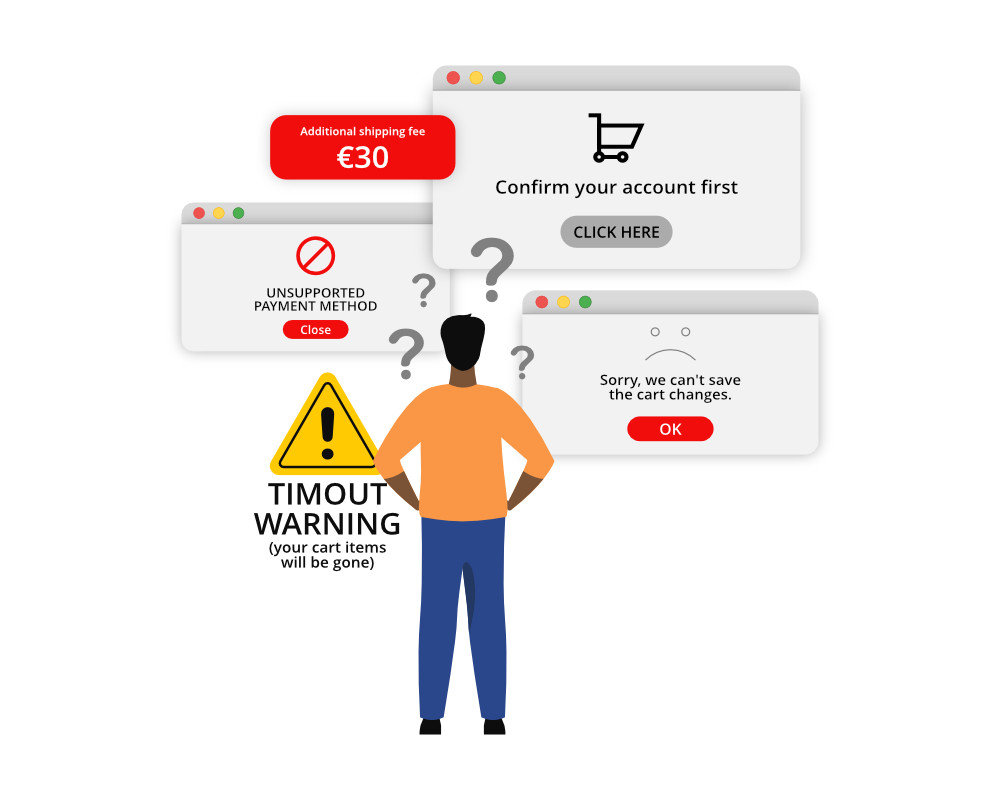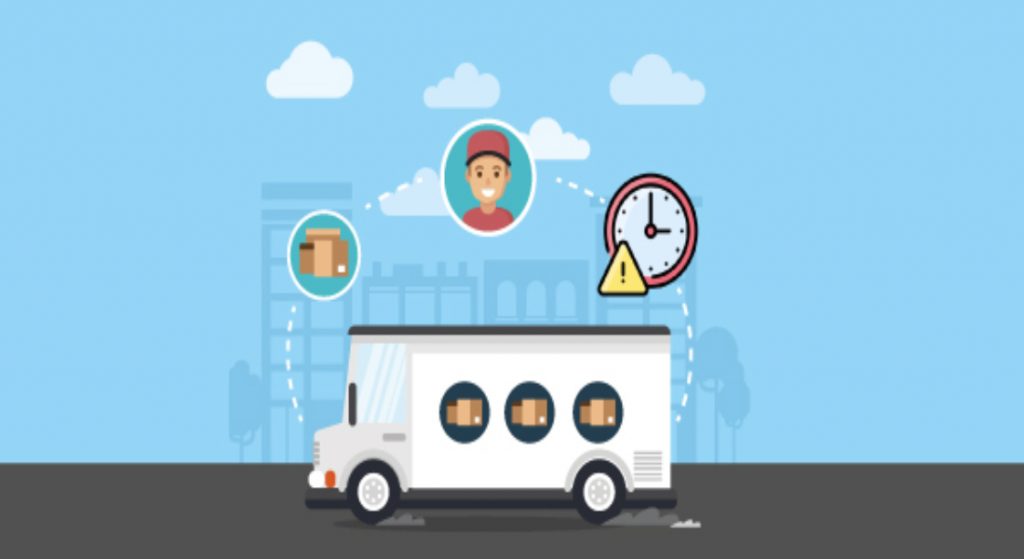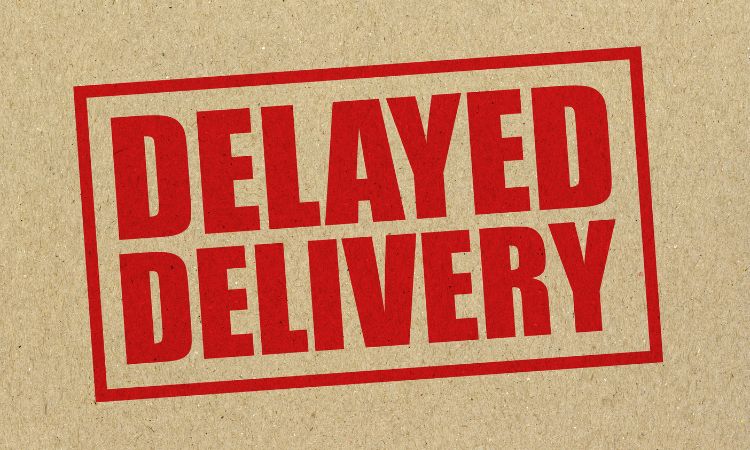Problems with online shopping delivery delays have become a constant challenge for modern consumers and e-commerce businesses alike. With the rapid evolution of online shopping, expectations for fast and reliable delivery have soared, making even minor delays a significant inconvenience. As the digital marketplace continues to expand, understanding the reasons behind these setbacks is more important than ever.
From supply chain issues and seasonal surges to technological mishaps, a host of factors can disrupt timely deliveries. These problems not only frustrate customers but also impact a business’s reputation and bottom line. By exploring the major causes, impacts, and the latest efforts to overcome delivery delays, we can get a clearer picture of how both shoppers and retailers can navigate these challenges more effectively.
Overview of Online Shopping Delivery Delays
Online shopping has become a staple of modern life, offering convenience, variety, and the ability to shop from anywhere. However, one persistent issue that shoppers frequently encounter is delivery delays. These delays can turn an otherwise seamless online shopping experience into a frustrating ordeal.
Delivery delays in online shopping can stem from various causes, including logistical hiccups, supply chain disruptions, or increased order volumes. Initially, when e-commerce was in its infancy, delivery times were relatively slow, and customers were more patient. As technology advanced and companies like Amazon popularized same-day and next-day shipping, customer expectations evolved dramatically. Today, rapid delivery is often expected, and any deviation can disappoint customers.
Statistics show that while delivery reliability has improved over the years, spikes in delayed deliveries occur during high-demand seasons or unexpected global events. The following table illustrates trends in delivery delays over the last several years:
| Year | Percentage of Delayed Deliveries |
|---|---|
| 2018 | 7.5% |
| 2019 | 6.2% |
| 2020 | 14.8% |
| 2021 | 9.4% |
| 2022 | 8.1% |
| 2023 | 8.4% |
Common Causes of Delivery Delays in E-Commerce
The reasons behind delivery delays in online shopping are diverse and interconnected. Understanding these causes helps both consumers and businesses set realistic expectations and develop solutions.
- Weather disruptions such as hurricanes, snowstorms, and floods impacting transit.
- Sudden spikes in demand during holiday seasons or promotional events.
- Operational challenges at warehouses, including understaffing or system outages.
- Carrier issues, such as vehicle breakdowns or labor shortages.
- Customs clearance delays for international orders.
- Supply chain shortages affecting inventory and shipment times.
Major Causes of Delivery Delays

Delivery delays can arise from a combination of internal mismanagement and external circumstances. Recognizing the distinct impact of each factor is important for devising effective strategies.
Internal and External Factors Affecting Order Timeliness
Internal factors typically involve processes and decisions within the e-commerce business or its logistics partners, such as inventory miscounts or communication breakdowns. External factors, on the other hand, involve outside events like extreme weather or global crises.
- Internal: Warehouse mismanagement, order processing errors, outdated inventory systems.
- External: Natural disasters, global pandemics, transport strikes, and geopolitics.
Impact of Supply Chain Disruptions
Supply chain disruptions have a domino effect on delivery timelines. Recent years have seen several high-profile disruptions:
- Factory closures due to pandemic lockdowns causing international backorders.
- Seaport congestion delaying the unloading and distribution of goods.
- Raw material shortages leading to increased lead times for manufacturing.
- Sudden regulatory changes, such as new customs checks or tariffs.
Comparing Seasonal Demand Surges and Logistic Disruptions, Problems with online shopping delivery delays
The following table highlights the differences between seasonal demand surges and logistic disruptions, showing how each affects delivery efficiency:
| Cause | Description | Impact Level |
|---|---|---|
| Seasonal Demand Surge | High order volumes during holidays like Black Friday or Lunar New Year. | Moderate to High |
| Logistic Disruption | Unexpected events disrupting transport or supply chains (e.g., COVID-19 lockdowns). | High to Critical |
| Carrier Worker Strikes | Work stoppages leading to a halt or slow-down in deliveries. | High |
Impact on Customers and Businesses: Problems With Online Shopping Delivery Delays
Delivery delays do not just cause inconvenience; they can have lasting effects on both customers and e-commerce companies. Understanding these impacts is essential for appreciating the urgency of solving delivery delay problems.
Consequences for Customers

When deliveries are late, customers can experience more than just impatience. The disappointment often translates into loss of trust toward the brand and decreased likelihood of future purchases. In cases of critical needs (such as gifts or essential goods), frustration can quickly escalate.
- Increased frustration and anxiety, especially for time-sensitive orders.
- Loss of confidence in the retailer or platform.
- Negative word of mouth or negative reviews shared on social media.
- Disrupted personal or business plans due to unfulfilled expectations.
Business Impacts: Reputation, Refunds, and Logistics Costs
For businesses, delivery delays can quickly become expensive. Besides the immediate costs of refunds or compensation, there’s also the risk of long-term damage to brand reputation. Additional costs may also arise from expediting orders or handling increased customer inquiries.
- Refunds and compensation for late or lost deliveries.
- Loss of returning customers and negative reviews impacting brand reputation.
- Increased logistics expenses due to rush shipping and handling complaints.
- Potential partnership losses with fulfillment or carrier services.
Notable Case Studies of Delivery Failures
The table below summarizes significant delivery failures and their outcomes, illustrating how delivery delays can impact even industry leaders:
| Company | Year | Incident | Outcome |
|---|---|---|---|
| Amazon | 2020 | Parcel delays during initial COVID-19 lockdowns | Temporary suspension of non-essential shipments; investment in logistics expansion |
| ASOS | 2021 | Christmas order backlog due to warehouse staff shortages | Customer refunds and widespread social media criticism |
| FedEx | 2022 | Severe weather halting ground deliveries across the US | Rerouted packages, increased customer support staff, reputational hit |
| Shopify Merchants | 2021 | Supply chain bottlenecks during global shipping crisis | Extended delivery promises, increased costs, customer churn |
Strategies for Minimizing Delivery Delays
E-commerce platforms and retailers invest in various strategies to reduce delivery times and ensure timely fulfillment, understanding that customer satisfaction often hinges on delivery reliability.
Methods to Reduce Delivery Times
Successful platforms have adopted a multi-pronged approach combining technology, process improvements, and enhanced collaboration.
- Decentralized warehouse and micro-fulfillment center models to store products closer to customers.
- Real-time inventory management systems to prevent overselling and stockouts.
- Predictive analytics to optimize routing and anticipate demand spikes.
- Automated picking and packing solutions for faster order processing.
Advanced Shipping Technologies and Solutions
Emerging technologies play a critical role in combating delivery delays. Notable solutions include:
- Drone delivery trials for small, urgent packages in select urban and rural locations.
- Autonomous delivery robots for last-mile deliveries within city environments.
- Smart lockers and pickup points to streamline customer retrieval of packages.
- Dynamic route optimization software to reduce delivery distances and congestion.
Collaborative Approaches Between Retailers and Logistics Providers
Collaboration between retailers and logistics companies helps streamline order fulfillment and transportation. Joint planning and shared data platforms allow for greater visibility and resilience during disruptions. By working together, these stakeholders can buffer against unexpected delays and rapidly adjust to changing circumstances.
Communication and Customer Service During Delays
Effective communication is crucial when delivery delays are unavoidable. Customers appreciate transparency and proactive updates, which can significantly soften negative reactions and build trust.
Communication Strategies for Informing Customers
Timely and honest updates help manage expectations and reduce uncertainty. Businesses often utilize SMS alerts, email notifications, or in-app messages to keep customers informed throughout the delivery process.
- Automated notifications at key shipment milestones, such as dispatch, transit, and delay alerts.
- Personalized messages that explain the cause of the delay and estimated resolution timeframe.
- Dedicated help pages addressing frequently asked questions about delivery issues.
Best Practices for Customer Support Responses
Empathetic and solution-oriented responses can turn a negative experience into a moment of loyalty. The following blockquote offers a sample support script:
“We sincerely apologize for the delay in your order. Due to unforeseen circumstances, your package is taking longer than expected to arrive. We are actively working with our delivery partners to resolve this, and we will keep you updated. If you need further assistance or wish to discuss alternative solutions, please let us know. Thank you for your patience and understanding.”
Improving Satisfaction with Proactive Updates
When businesses provide proactive updates and clear next steps, customers are less likely to feel ignored or abandoned. Detailed notifications reassure customers that their concerns are being addressed, often resulting in higher retention and positive feedback even in the face of delays.
Real-World Examples of Delivery Delay Issues
Delivery delays can play out in countless ways, affecting individuals and businesses alike. Real-world examples help illustrate how different scenarios unfold and how resolutions vary based on the circumstances.
Illustrative Scenarios and Resolutions
The table below Artikels some typical scenarios, their causes, and how each was ultimately resolved:
| Scenario | Reason for Delay | Resolution |
|---|---|---|
| Holiday gift order arriving after the holiday | Unexpected volume surge and weather-related transport blockages | Partial refund, expedited replacement shipment, and apology voucher |
| Electronics shipment held in customs for extra screening | New import regulations and incomplete paperwork | Assisted documentation process and provided regular status updates |
| Essential medication delayed during global lockdown | Flight restrictions and supply chain disruptions due to pandemic | Switched to local supplier and implemented medical delivery priority |
Descriptive Narratives of Customer Experiences
When Jane ordered a smartwatch for her child’s birthday, she expected it within two days as stated on the website. However, a sudden snowstorm closed regional highways, causing all deliveries to be pushed back by at least a week. Jane received daily updates, and although disappointed, she appreciated the clear communication and a discount code for future use.
In another instance, a small business owner in Singapore placed a bulk order for promotional merchandise that was delayed due to a global container shortage. The company was informed about the issue and offered an expedited shipping upgrade at no extra cost once the inventory arrived in port. This proactive approach helped preserve the business relationship despite the initial setback.
Solutions and Innovations Addressing Delivery Delays
Technology is rapidly transforming the delivery landscape, offering innovative solutions to age-old problems of timeliness. The integration of advanced systems is creating a new standard for reliability and transparency in shipping.
Technological Advancements to Solve Delivery Delays

Modern logistics increasingly relies on a suite of technological tools, making it possible to identify bottlenecks and intervene before problems escalate.
- Artificial intelligence (AI) for accurate demand forecasting and route optimization.
- Automation in warehouses, from sorting robots to automated picking systems.
- Real-time GPS tracking and geofencing for precise delivery updates.
- Blockchain for transparent and tamper-proof supply chain records.
The Role of AI, Automation, and Real-Time Tracking
AI analyzes data from multiple sources to predict delays and suggest alternative delivery routes in real time. Automation speeds up order processing, while real-time tracking keeps both businesses and customers informed with up-to-the-minute status updates. This combination reduces surprises and builds trust.
Emerging Startups and Their Approaches
Many startups are pioneering new approaches to eliminating delivery delays:
- Deliv: Last-mile crowdsourced delivery connecting retailers with local drivers for same-day service.
- Shippo: API-driven shipping platform that helps merchants automate label generation and track shipments across carriers.
- Starship Technologies: Deploys autonomous ground robots for food and parcel deliveries in urban areas.
- Nuro: Develops self-driving vehicles designed for safe, efficient neighborhood deliveries.
Preventative Measures for Consumers
While many factors behind delivery delays are outside a shopper’s control, consumers can take certain actions to reduce their risk of experiencing late deliveries and manage their expectations effectively.
Actionable Steps to Minimize Delivery Delays
Being proactive and informed helps shoppers better navigate potential issues with online orders. The following table offers practical tips and their benefits:
| Action | Benefit |
|---|---|
| Check estimated delivery dates and product availability before ordering | Set realistic expectations and avoid disappointment |
| Use reliable, well-reviewed sellers and shipping options | Increase likelihood of timely delivery and better customer service |
| Sign up for order tracking notifications or use tracking apps | Monitor shipment status and respond quickly to problems |
| Order well in advance of critical dates (holidays, birthdays, business needs) | Create a buffer for unexpected delays |
| Double-check address and contact information before finalizing purchase | Prevent common errors that might cause shipping delays |
Leveraging Tracking Tools and Selecting Reliable Delivery Options
Most e-commerce platforms now offer robust tracking tools that provide real-time updates on package location and status. By actively monitoring shipments and choosing reputable carriers, shoppers can stay informed and respond quickly if issues arise. It’s also wise to read reviews and understand return/refund policies before making a purchase to minimize risk in case of significant delays.
Wrap-Up
In summary, problems with online shopping delivery delays touch everyone involved in e-commerce, from shoppers eagerly awaiting parcels to businesses striving to meet expectations. By staying informed about the underlying causes and embracing proactive strategies, we can all contribute to smoother, more reliable delivery experiences and foster lasting trust in the world of online shopping.
FAQ Summary
Why do online shopping deliveries get delayed?
Common reasons include supply chain disruptions, logistic bottlenecks, high order volumes during sales, weather events, and miscommunication between retailers and delivery partners.
How can I track my delayed order?
Most online stores provide a tracking link or number, which you can use on the carrier’s website or in the retailer’s app to check the status of your order.
What should I do if my order is significantly delayed?
Contact customer support for an update. You can often request an estimated delivery date, compensation, or even a refund if the delay is unreasonable.
Do delivery delays affect refunds or returns?
Some retailers extend return and refund windows for delayed orders, but it’s best to check the store’s policy or contact their support team.
How can I minimize the chances of my order being delayed?
Choose reputable sellers, opt for express shipping when possible, order early during peak seasons, and always check product availability before purchasing.